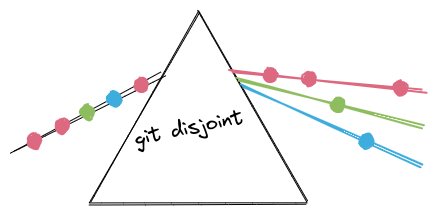

git-disjoint automates an optimal git workflow for PR authors and reviewers by grouping commits by issue onto unique branches, referencing issues in branch names, and creating PRs.
This encourages the submission of small, independent PRs, minimizing cognitive load on reviewers and keeping cycle time low.
git-disjoint uses commit messages to determine which issue a commit relates to. Following formalized conventions for commit messages, git-disjoint automatically creates a PR for each issue and associates the PR to an existing issue in your work tracker.
When the PR merges, the existing issue closes and your git history updates to reflect the upstream changes.
git-disjoint may add value to your workflow if you
You must have the [hub] command installed and configured.
You can install git-disjoint with [cargo binstall].
Otherwise, download a release compatible with your OS and architecture from the
[Releases] page, extract the binary, and put it somewhere in your $PATH.
Use the Nix flake:
shell
nix shell github:EricCrosson/git-disjoint
If cargo is installed on your system, run:
shell
cargo +nightly install git-disjoint
In each commit message, include a reference to the relevant ticket.
For example, use the Jira automation format:
Ticket: COOL-123
or
Closes Ticket: COOL-123
Or use the GitHub format:
Closes #123
When you're ready to:
run git disjoint.
To ignore commits associated with an issue, use the --choose flag. This will
open a menu where you can select the issues to create PRs for.